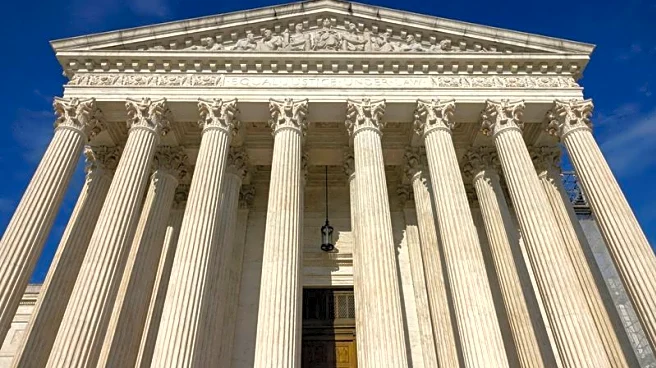What's Happening?
President Trump's unilateral imposition of tariffs is under scrutiny by the Supreme Court, with justices questioning the legal basis of using the International Emergency Economic Powers Act for such actions.
The tariffs, aimed at addressing trade imbalances and national security threats, have raised significant revenue but are challenged for exceeding presidential authority. The court's skepticism spans both conservative and liberal justices, who question the expansive interpretation of emergency powers. The case, expected to be decided next year, could redefine the scope of presidential authority in trade policy.
Why It's Important?
The outcome of this case could reshape U.S. trade policy and executive power. A ruling against the tariffs may lead to significant refunds, impacting businesses and consumer prices. The decision will also address the balance of power between the executive branch and Congress, potentially setting a precedent for future administrations. The case highlights the tension between national security claims and economic policy, with implications for U.S. international trade relations.
What's Next?
A decision is anticipated next year, with potential consequences for trade policy and executive authority. If the court rules against the tariffs, the Trump administration may seek alternative legal avenues to impose duties. The logistical challenge of refunding collected tariffs could arise, affecting economic conditions. The decision will be closely watched by businesses and policymakers, influencing future trade strategies and executive power.
Beyond the Headlines
The case underscores broader issues of executive power and its limits, particularly in economic policy. The legal debate centers on whether emergency powers can be used to bypass congressional authority, raising questions about checks and balances in government. The decision could influence how future presidents approach trade and economic emergencies, potentially reshaping U.S. trade policy and international relations.












